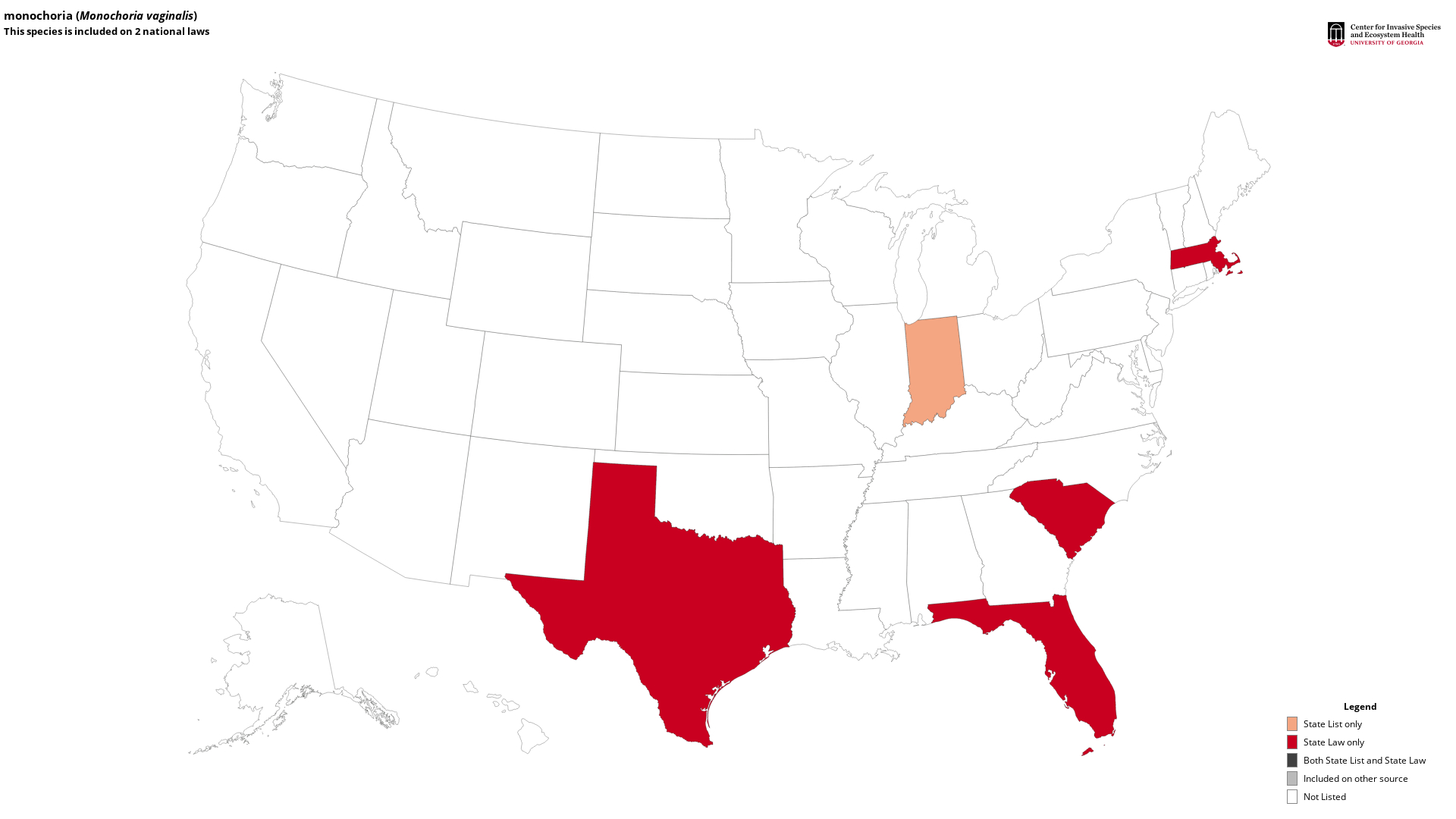monochoria
(Monochoria vaginalis)
This species is Introduced in the United States
Appearance
Monochoria vaginalis is an aquatic herbaceous plant native to temperate and tropical Asia. Plant size, leaf shape, and flower number in M. vaginalis are highly dependent on the amount of water available. It can be annual or perennial. It has a short rhizome. M. vaginalis can grow from 4-20 in. (10-50 cm) tall and is stemless.
Foliage
Two types of leaves are seen. The sessile leaves are up to 2 in. (5 cm) long. The blade is linear with an acuminate apex. Petiolate leaves are cordate with a soft hollow petiole from 3-11 in. (7-28 cm) long.
Flowers
The flowers of M. vaginalis are few to numerous in racemes 0.79-1.6 in. (2-4 cm) long. In California racemes usually bear 2-8 flowers. The peduncles emerge from the sheath of the upper-most leaf.
Fruit
Fruits are ellipsoid 3-valved capsules about 0.4 in. (1 cm) long. The numerous oblong seeds have 8-12 longitudinal ribs.
Ecological Threat
Monochoria vaginalis is listed as a Federal Noxious Weed. It has been reported in California and Hawaii. It is often seen as a weed in rice fields.
Selected Images
Maps
EDDMapS Distribution - This map is incomplete and is based only on current site and county level reports made by experts, herbaria, and literature. For more information, visit www.eddmaps.org
State Lists - This map identifies those states that have this species on their invasive species list or law.
Invasive Listing Sources
- Federal Noxious Weeds
- Florida Noxious Weeds
- Indiana Invasive Species Council - Invasive Plant List
- Indiana Pest Species
- Indiana Prohibited Plant Species
- Massachusetts Noxious Weeds
- Massachusetts Prohibited Plant List
- South Carolina Illegal Aquatic Plants
- South Carolina Plant Pest List
- Texas Noxious Weeds
- USDA APHIS Regulated Pest List
Taxonomic Rank
| Domain: Eukarya |
| Kingdom: Plantae |
| Phylum: Magnoliophyta |
| Class: Magnoliopsida |
| Superorder: Lilianae |
| Order: Commelinales |
| Family: Pontederiaceae |
| Genus: Monochoria |
| Monochoria vaginalis |
References
Common Name Reference: Weed Science Society of America Common Names List
Scientific Name Reference: USDA, NRCS. 2010. The PLANTS Database. National Plant Data Center, Baton Rouge, LA, USA.


